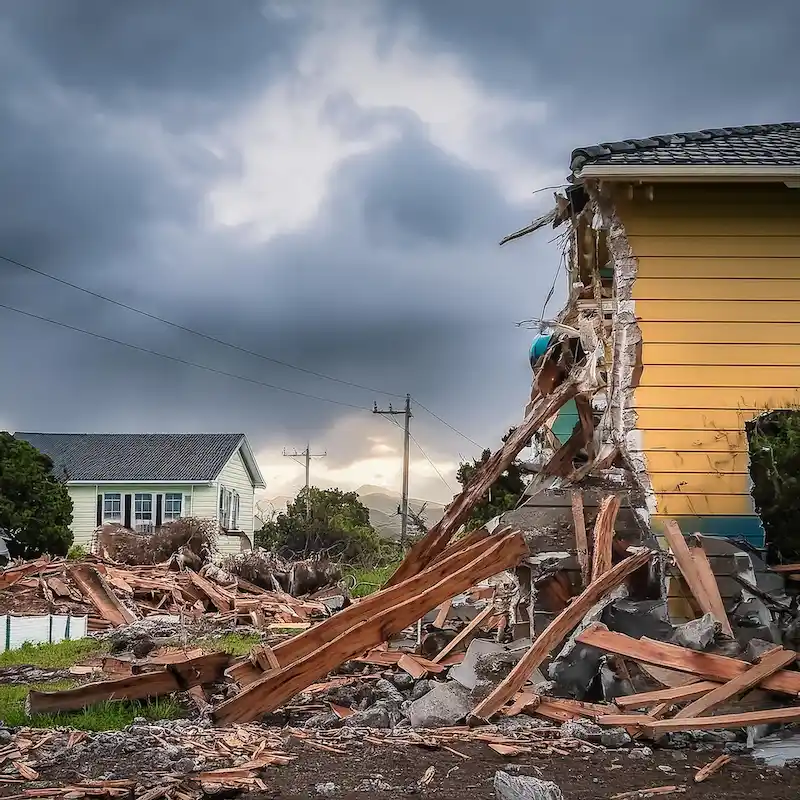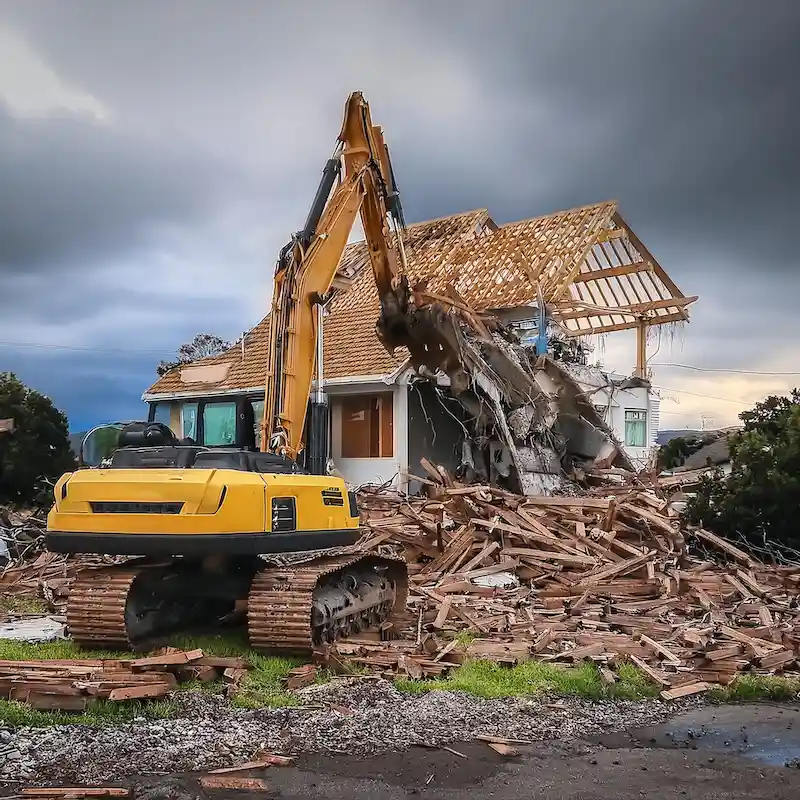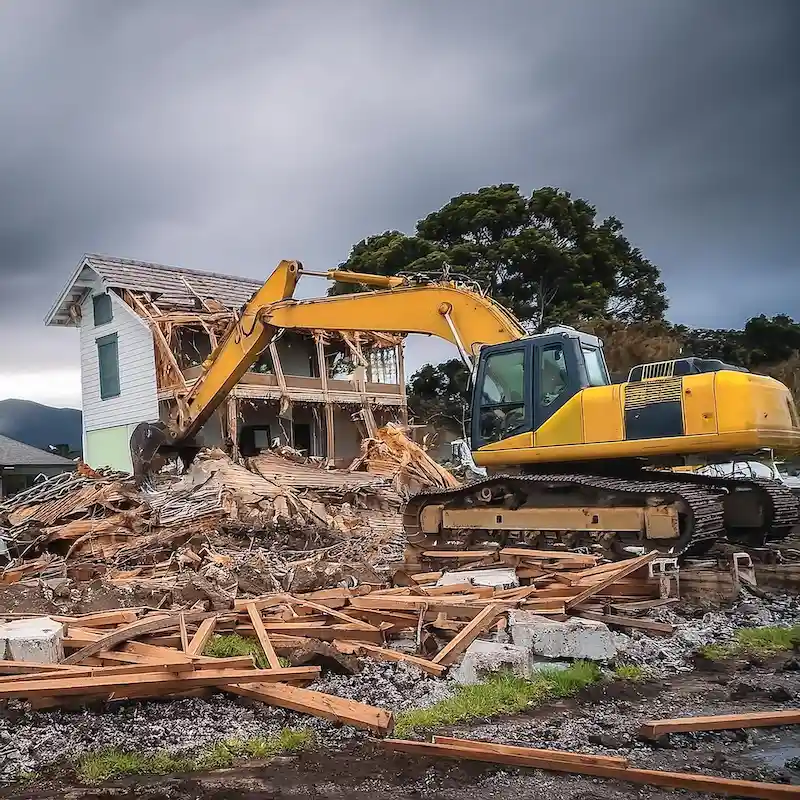The critical Importance of waste management in your demolition project
Demolition work is never a walk in the park.
As a Kiwis with a penchant for blowing things up (in a strictly controlled, regulated manner of course), you know that demolition projects are no small feat. But behind the sheer thrill of watching buildings crumble, there’s a far less glamorous – yet absolutely essential – task at hand: waste management. Yes, my friends, if you want your demolition project to be a raging success (other than the actual demolition bit), you’d better have a rock-solid waste management plan up your sleeve. Allow me to explain why.
The dirty secret of demolition waste:
When you’re gleefully reducing a structure to rubble, you’re also creating a veritable Mount Everest of waste. We’re talking concrete, metal, wood, hazardous materials – the works. And let me tell you, if you don’t have a plan to deal with all that debris, you’re looking at a environmental disaster in the making, not to mention a surefire way to end up in the doghouse with the authorities.
Think about it – all that waste sitting around, leaching who-knows-what into the soil and groundwater. Not a good look, my friends. And let’s not forget the potential health hazards for your workers. Heck, you could even end up facing some hefty fines if you don’t dispose of that waste properly. Trust me, you do not want to be that guy.

The key to demolition and waste segregation:
So, what’s the secret to keeping your demolition project from turning into a hot mess? Waste segregation, my friends. That’s right, sorting that rubble into neat little piles is the key to demolition glory.
First things first, you’ll want to do a good old-fashioned waste audit. Get in there, take a look at what you’re dealing with, and figure out exactly what kinds of waste you’ve got on your hands. Metal, concrete, wood, hazardous materials – you name it, you need to know about it.
Once you’ve got a handle on the types and quantities of waste, it’s time to get strategic. Break out the color-coded bins and start sorting that stuff like a pro. Blue for metal, green for wood, red for the nasty hazardous stuff – make it easy for your workers to get it right. And don’t forget the signage, people! Clear labeling is the difference between a well-oiled waste management machine and a complete cluster-you-know-what.

Recycle, reuse, refuse to lose:
But we’re just getting started, my friends. The real magic happens when you start maximizing that ol’ reduce, reuse, recycle mantra.
Alright, let’s dive deeper into the world of demolition waste and explore the different materials that can be reused and recycled. Buckle up, folks, because we’re about to take a wild ride through the wonderland of sustainable demolition.
First up, the humble concrete. Now, you might be thinking, “Concrete? That’s just a boring old lump of gray stuff, right?” Wrong, my friends. This unassuming material is a veritable goldmine of opportunity.
You see, that concrete can be crushed, ground, and transformed into something absolutely magical – recycled concrete aggregate. This miracle material can be used as a base for new roads, pathways, and even building foundations. Talk about giving new life to an old friend.
But the concrete party doesn’t stop there. You can also use it to create those oh-so-trendy concrete countertops, planters, and even outdoor furniture. Imagine the look on your client’s face when you tell them their brand-new kitchen counter is made from the very rubble that used to be their living room. Talk about a conversation starter!
Now, let’s move on to the shiny stuff – metal. Whether it’s steel, aluminum, or copper, this stuff is pure liquid gold when it comes to recycling. Simply melt it down, and voila – you’ve got a fresh batch of raw materials, ready to be reborn as everything from new appliances to sleek office furniture.
And let’s not forget about those pesky old pipes and wires. Sure, they might look like junk to the untrained eye, but to a savvy recycler, they’re a veritable treasure trove of precious metals. Copper, brass, and even a touch of gold – it’s all in there, just waiting to be liberated and given a new lease on life.
But the recycling fun doesn’t stop there, my friends. Let’s talk about the often-overlooked hero of the demolition world – wood. That’s right, those old beams, floorboards, and two-by-fours can be salvaged, repurposed, and turned into all sorts of amazing new creations.
Think rustic barn doors, custom furniture, even charming picture frames – the possibilities are endless. And let’s not forget about that old-growth timber, the kind that’s just not available anymore. That stuff is pure gold, my friends, and you can bet your bottom dollar that there are plenty of eco-conscious homeowners out there who would be more than happy to give it a new home.
And speaking of old-growth timber, let’s not forget about those lovely old-school appliances and fixtures. Sure, they might not be the latest and greatest, but they’ve got a certain je ne sais quoi that just can’t be replicated. Donate or sell those beauties to your local reuse center, and you can rest easy knowing they’re getting a second chance at life.
And let’s not forget about that pesky hazardous waste – you know, the stuff that’s got the authorities all in a tizzy. Well, fear not, my friends, because there’s a solution for that, too. Enter the waste-to-energy facilities, those magical places that can turn your non-recyclable debris into a sustainable source of electricity or heat.
The waste management dream team – Purpose Fill
Now, I know what you’re thinking – all this waste management mumbo jumbo sounds like a lot of work. And you’d be right. But fear not, because there’s a solution: the waste management dream team.
That’s right, you’re going to want to find yourself a waste management company that knows their stuff. We’re talking experience in demolition projects, the right licenses and permits, and a fleet of trucks and equipment to handle your waste like a boss.
But it’s not just about finding any old waste management company – you want one that’s committed to sustainability and eco-friendly practices. Look for a provider that has a comprehensive waste management plan, uses recycled content materials, and is transparent about their pricing and reporting. After all, you don’t want any nasty surprises when it comes to your waste management costs.
And while you’re at it, make sure your subcontractors and suppliers are on board with the eco-friendly program, too. You want everyone in your demolition dream team to be singing from the same sustainability songbook.

The benefits of doing it right
Now, I know what you’re thinking – all this waste management stuff sounds like a lot of work. But trust me, my friends, the benefits of getting it right are well worth the effort.
First and foremost, you’re looking at some serious cost savings. When you minimize waste and maximize recycling, you’re cutting down on those pesky disposal fees. And let’s not forget about those recycling rebates – ka-ching!
But the benefits go far beyond just your bottom line. By adopting eco-friendly waste management practices, you’re promoting sustainability, reducing your environmental impact, and demonstrating your commitment to the planet. And let’s be real, in today’s climate-conscious world, that kind of reputation is pure gold.
Oh, and let’s not forget about the all-important compliance factor. When you’ve got a solid waste management plan in place, you can rest easy knowing you’re staying on the right side of the law. No more sweating those pesky fines and legal headaches.
So, there you have it, folks – the critical importance of waste management in your demolition project. From sorting that rubble to finding the perfect waste management partner, it’s all about minimizing waste, maximizing recycling, and keeping that environmental impact to a minimum.
Remember, when it comes to demolition, the real thrill isn’t in the explosion – it’s in the impeccable waste management that follows ( this is where purpose fill steps in and sorts it our for you). So, get out there, get planning, and show the world that you’re the master of demolition domination. Your planet will thank you for it.
Easy convenient and cost-effective and ecological!
